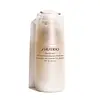What's inside
What's inside
 Key Ingredients
Key Ingredients

 Benefits
Benefits

 Concerns
Concerns

 Ingredients Side-by-side
Ingredients Side-by-side

Water
Skin ConditioningAlcohol Denat.
AntimicrobialDipropylene Glycol
HumectantGlycerin
HumectantEthylhexyl Methoxycinnamate
UV AbsorberDimethicone
EmollientCaprylyl Methicone
Skin ConditioningXylitol
HumectantOctocrylene
UV AbsorberDiisopropyl Sebacate
EmollientBis-Ethylhexyloxyphenol Methoxyphenyl Triazine
Skin ConditioningPhenylbenzimidazole Sulfonic Acid
UV AbsorberMelaleuca Alternifolia Leaf Oil
AntioxidantAminopropyl Dimethicone
Erythritol
HumectantPEG/PPG-14/7 Dimethyl Ether
Skin ConditioningPEG/PPG-17/4 Dimethyl Ether
Skin ConditioningTocopheryl Acetate
AntioxidantXanthan Gum
EmulsifyingPhytosteryl Macadamiate
Skin ConditioningCaffeine
Skin ConditioningPyrus Malus Peel Extract
AntioxidantRosa Alba Leaf/Stem Extract
HumectantMelaleuca Alternifolia Leaf Extract
PerfumingZiziphus Jujuba Seed Extract
Skin ConditioningCurcuma Longa Root Extract
MaskingPolyquaternium-51
Skin ConditioningChlorella Vulgaris Extract
Skin ConditioningPPG-8-Ceteth-20
EmulsifyingHdi/Trimethylol Hexyllactone Crosspolymer
Silica
AbrasiveCarbomer
Emulsion StabilisingIsostearic Acid
CleansingAcrylates/C10-30 Alkyl Acrylate Crosspolymer
Emulsion StabilisingButylene Glycol
HumectantSodium Metaphosphate
BufferingDisodium EDTA
Diphenolic Acid
Tocopherol
AntioxidantBHT
AntioxidantPhenoxyethanol
PreservativeParfum
MaskingCI 77492
Cosmetic ColorantWater, Alcohol Denat., Dipropylene Glycol, Glycerin, Ethylhexyl Methoxycinnamate, Dimethicone, Caprylyl Methicone, Xylitol, Octocrylene, Diisopropyl Sebacate, Bis-Ethylhexyloxyphenol Methoxyphenyl Triazine, Phenylbenzimidazole Sulfonic Acid, Melaleuca Alternifolia Leaf Oil, Aminopropyl Dimethicone, Erythritol, PEG/PPG-14/7 Dimethyl Ether, PEG/PPG-17/4 Dimethyl Ether, Tocopheryl Acetate, Xanthan Gum, Phytosteryl Macadamiate, Caffeine, Pyrus Malus Peel Extract, Rosa Alba Leaf/Stem Extract, Melaleuca Alternifolia Leaf Extract, Ziziphus Jujuba Seed Extract, Curcuma Longa Root Extract, Polyquaternium-51, Chlorella Vulgaris Extract, PPG-8-Ceteth-20, Hdi/Trimethylol Hexyllactone Crosspolymer, Silica, Carbomer, Isostearic Acid, Acrylates/C10-30 Alkyl Acrylate Crosspolymer, Butylene Glycol, Sodium Metaphosphate, Disodium EDTA, Diphenolic Acid, Tocopherol, BHT, Phenoxyethanol, Parfum, CI 77492
Water
Skin ConditioningPropanediol
SolventGlycerin
Humectant1,2-Hexanediol
Skin ConditioningCetyl Ethylhexanoate
EmollientVinyldimethicone
Carbomer
Emulsion StabilisingEthylhexyl Palmitate
EmollientTromethamine
BufferingCetearyl Olivate
Palmitic Acid
EmollientStearic Acid
CleansingSorbitan Olivate
EmulsifyingPolyglyceryl-10 Oleate
Skin ConditioningParfum
MaskingEthylhexylglycerin
Skin ConditioningDisodium EDTA
Hydrogenated Lecithin
EmulsifyingPanthenol
Skin ConditioningCamellia Sinensis Leaf Extract
AntimicrobialMyristic Acid
CleansingButylene Glycol
HumectantSodium Hyaluronate
HumectantVaccinium Macrocarpon Fruit Extract
AstringentBeta-Glucan
Skin ConditioningCentella Asiatica Extract
CleansingPropolis Extract
Skin ConditioningAsiaticoside
AntioxidantAsiatic Acid
Skin ConditioningMadecassoside
AntioxidantMadecassic Acid
Skin ConditioningWater, Propanediol, Glycerin, 1,2-Hexanediol, Cetyl Ethylhexanoate, Vinyldimethicone, Carbomer, Ethylhexyl Palmitate, Tromethamine, Cetearyl Olivate, Palmitic Acid, Stearic Acid, Sorbitan Olivate, Polyglyceryl-10 Oleate, Parfum, Ethylhexylglycerin, Disodium EDTA, Hydrogenated Lecithin, Panthenol, Camellia Sinensis Leaf Extract, Myristic Acid, Butylene Glycol, Sodium Hyaluronate, Vaccinium Macrocarpon Fruit Extract, Beta-Glucan, Centella Asiatica Extract, Propolis Extract, Asiaticoside, Asiatic Acid, Madecassoside, Madecassic Acid
Ingredients Explained
These ingredients are found in both products.
Ingredients higher up in an ingredient list are typically present in a larger amount.
Butylene Glycol (or BG) is used within cosmetic products for a few different reasons:
Overall, Butylene Glycol is a safe and well-rounded ingredient that works well with other ingredients.
Though this ingredient works well with most skin types, some people with sensitive skin may experience a reaction such as allergic rashes, closed comedones, or itchiness.
Learn more about Butylene GlycolCarbomer is a polymer of acrylic acid. Its main role is to create a gel consistency.
A high amount of carbomer can cause pilling or balling up of products. Don't worry, most products contain 1% or less of carbomer.
Disodium EDTA plays a role in making products more stable by aiding other preservatives.
It is a chelating agent, meaning it neutralizes metal ions that may be found in a product.
Disodium EDTA is a salt of edetic acid and is found to be safe in cosmetic ingredients.
Learn more about Disodium EDTAGlycerin is already naturally found in your skin. It helps moisturize and protect your skin.
A study from 2016 found glycerin to be more effective as a humectant than AHAs and hyaluronic acid.
As a humectant, it helps the skin stay hydrated by pulling moisture to your skin. The low molecular weight of glycerin allows it to pull moisture into the deeper layers of your skin.
Hydrated skin improves your skin barrier; Your skin barrier helps protect against irritants and bacteria.
Glycerin has also been found to have antimicrobial and antiviral properties. Due to these properties, glycerin is often used in wound and burn treatments.
In cosmetics, glycerin is usually derived from plants such as soybean or palm. However, it can also be sourced from animals, such as tallow or animal fat.
This ingredient is organic, colorless, odorless, and non-toxic.
Glycerin is the name for this ingredient in American English. British English uses Glycerol/Glycerine.
Learn more about GlycerinParfum is a catch-all term for an ingredient or more that is used to give a scent to products.
Also called "fragrance", this ingredient can be a blend of hundreds of chemicals or plant oils. This means every product with "fragrance" or "parfum" in the ingredients list is a different mixture.
For instance, Habanolide is a proprietary trade name for a specific aroma chemical. When used as a fragrance ingredient in cosmetics, most aroma chemicals fall under the broad labeling category of “FRAGRANCE” or “PARFUM” according to EU and US regulations.
The term 'parfum' or 'fragrance' is not regulated in many countries. In many cases, it is up to the brand to define this term.
For instance, many brands choose to label themselves as "fragrance-free" because they are not using synthetic fragrances. However, their products may still contain ingredients such as essential oils that are considered a fragrance by INCI standards.
One example is Calendula flower extract. Calendula is an essential oil that still imparts a scent or 'fragrance'.
Depending on the blend, the ingredients in the mixture can cause allergies and sensitivities on the skin. Some ingredients that are known EU allergens include linalool and citronellol.
Parfum can also be used to mask or cover an unpleasant scent.
The bottom line is: not all fragrances/parfum/ingredients are created equally. If you are worried about fragrances, we recommend taking a closer look at an ingredient. And of course, we always recommend speaking with a professional.
Learn more about ParfumWater. It's the most common cosmetic ingredient of all. You'll usually see it at the top of ingredient lists, meaning that it makes up the largest part of the product.
So why is it so popular? Water most often acts as a solvent - this means that it helps dissolve other ingredients into the formulation.
You'll also recognize water as that liquid we all need to stay alive. If you see this, drink a glass of water. Stay hydrated!
Learn more about Water